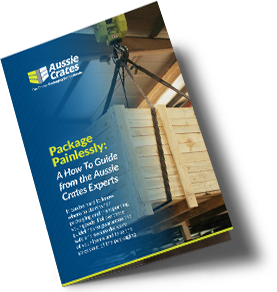
For centuries, the shipping industry has used wooden crates to protect goods during transits. However, in recent years, cardboard boxes have also become popular. After all, they are more affordable to manufacture. Any business wanting to save shipping costs would consider it a great solution.
Now, if you’re undecided about which type of packaging material to use, this article is for you. We will discuss the pros and cons of cardboard boxes and wood crates. In this way, you can make an informed decision about your choice of packaging material.
Pros and Cons of Cardboard Boxes
Cardboard boxes are commonly made from materials like fibreboard or thick craft paper. Here are some of the great qualities of these packaging solutions:
- Accessible – It is easy to set up and prepare cardboard boxes for shipping needs. In most cases, the assembly process would only require one person.
- Lightweight – Compared to wooden crates, cardboard boxes weigh a lot less. So, you can cut down on freight costs.
- Eco-friendly – Cardboard boxes are made from sustainable materials. What’s more, they decompose faster than wood.
Of course, there are also disadvantages to using cardboard boxes:
- Not weatherproof – Being made from paper materials, a cardboard box absorbs liquid. It won’t retain its integrity when exposed to the elements.
- Not ideal for reusing – Compared to wooden crates, cardboard boxes are more susceptible to damage. Most of the time, they’re used as a one-time shipping solution.
- Not ideal for heavy loads – Heavier shipments shouldn’t be packed in cardboard boxes because the material distorts quickly when it’s put under too much stress.
- Unreliable protection – Cardboard boxes do not offer reliable protection for fragile items.
Pros and Cons of Wooden Crates
There are many good reasons why wooden crates have remained a popular shipping solution for hundreds of years. Here are some of their great qualities:
- Cost-effective – Compared to cardboard, wood can be more expensive. However, its durability and longevity allow companies to save more money over time. After all, wooden crates are strong enough to be reused repeatedly.
- Repairable – If a wooden crate gets damaged in any way, it is still easy to repair. In most cases, you can make it look new again.
- Robust – Since wood is a strong material, it can reliably protect the item inside the crate. It can also handle heavy loads without getting distorted. Even if the packaging is exposed to the elements, it will retain its integrity while securing the products it contains.
- Reusable and Recyclable – Even if the wooden crate becomes damaged beyond repair, it is still usable. The scrap wood can be used for other projects. Some would even shred the material to create mulch.
- Stackable – Since wooden crates are strong, you can stack them on top of each other. You can do this even if the items inside the crates are heavy. As a result, you can save storage space in your warehouse or shipping vessel.
While wooden crates have great qualities, they also come with some disadvantages:
- Needs treatment – To avoid potential pathogens and eliminate moisture levels, wooden crates should be treated properly. For companies creating their own packaging solution, treating the timber could rack up the shipment costs.
- Heavy – Wooden crates can be extremely heavy. So, you’ll need lifting equipment to safely move the containers around your facility.
Choose Quality Packaging Materials
Indeed, wooden crates are the better solution for packing your products or items. They are suitable for local and international shipments.
Here at Aussie Crates, we only manufacture timber crates with high-quality, solid and durable wood. You don’t even have to worry about treating the material. After all, we only use ISPM-15 compliant timber.
Contact Aussie Crates today to discuss your packaging needs!
Let’s Talk
